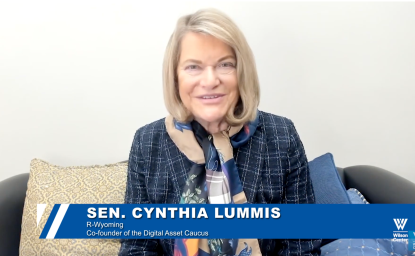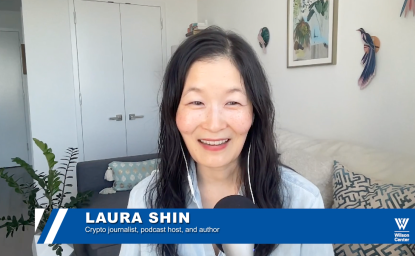Understanding Ethereum's Layer 1 and Layer 2: Differences, Adoption, and Drawbacks
This article offers a comprehensive understanding of Ethereum's Layer 1 and Layer 2, adoption trends, challenges, and an outlook on their future.
This article offers a comprehensive understanding of Ethereum's Layer 1 and Layer 2, adoption trends, challenges, and an outlook on their future.

There are hundreds of active Decentralized Finance (DeFi) protocols across over one hundred blockchains. As the adoption and usage of DeFi continues to increase so does the need for the underlying blockchains the protocols are built on to be able to scale. Layer 1 blockchains like Solana, Avalanche, and Tron can process thousands of transactions per second with transaction finality time, or the guarantee a transaction cannot be tampered with or reversed, on-par with traditional payment processors. While there are several billion dollars worth of total value locked (TVL) on DeFi protocols on these blockchains, the Ethereum ecosystem continues to dominate the DeFi space as users favor the security of Ethereum and the robust spread of protocols deployed on the network. According to DefiLlama as of August 17, 2023, the Ethereum ecosystem accounts for 68% ($50B) of DeFi TVL and 56% ($69B) of stablecoins deployed on-chain.
Historically, low scalability and high transaction costs on Ethereum have hindered adoption. Over the last year, this has begun to change with the emergence of Layer 2 solutions on the Ethereum blockchain. These solutions aim to address the scalability and cost issues associated with Ethereum's Layer 1. But what exactly are Layer 1 and Layer 2? How do they differ, and why are they crucial for the future of DeFi and the broader crypto ecosystem? This article delves into these questions, offering a comprehensive understanding of Ethereum's Layer 1 and Layer 2, adoption trends, challenges, and an outlook on their future. Before you dive in, if you’re new to DeFi concepts we recommend reading the previous article in this series, DeFi 101: The Good, the Bad, and the Regulatory, which provides a breakdown of how DeFi works and defines many of the concepts we will be discussing here today.
Ethereum's main network, or Layer 1, is the Ethereum blockchain's base layer, where all transactions are settled. It is highly secure, thoroughly battle-tested, decentralized, and arguably the most trusted blockchain outside of Bitcoin. The Ethereum produced its first block in July of 2015 utilizing a “proof of work” (PoW) consensus mechanism. This remained unchanged until September of 2022 when the Ethereum network completed the significant transition to a “proof of stake” (PoS) consensus mechanism. Let’s break down what this means and why it matters.
Originally, like Bitcoin, Ethereum operated on a "proof of work" (PoW) consensus mechanism. In this system, miners leveraged GPUs and ASICs (Application-Specific Integrated Circuits) to solve complex mathematical problems to validate and add new transactions to the blockchain. While this method provides strong security, it is energy-intensive, as it requires a vast amount of computational power.
PoW also does not necessarily benefit from economies of scale as each subsequent block produced (how transactions are processed and stored) becomes more difficult to solve, requiring ever increasing amounts of computational power. This ever-increasing difficulty also severely limits scalability. For example, Bitcoin mining consumes roughly 0.5% of all energy produced worldwide but can only process 7 transactions per second. This energy consumption has been a point of criticism for many environmental advocates and has raised concerns about the sustainability of PoW-based blockchains.
In response to these concerns and to improve the network's efficiency, Ethereum transitioned to a "proof of stake" (PoS) consensus mechanism in September of 2022. This method is far less energy-intensive, with estimates suggesting it reduces energy consumption by up to 99%. Unlike PoW, where miners compete to solve mathematical problems, PoS relies on validators who are chosen to create new blocks based on the number of coins they hold and are willing to "stake" or lock up as collateral. In Ethereum’s case, validators stake native Ether ($ETH). Validators also participate in attesting or agreeing on the validity of proposed blocks. This process ensures that blocks added to the chain are valid and agreed upon by a majority of validators.
Validators earn rewards for proposing new blocks and for attesting to the validity of transactions. These rewards come from transaction fees and, in some cases, newly minted cryptocurrency. To ensure validators act honestly, the PoS system has a punitive measure called "slashing." If a validator tries to approve fraudulent transactions or behaves maliciously, a portion (or all) of their staked cryptocurrency can be taken away or "slashed." This mechanism discourages dishonest behavior since validators have a financial stake in the network's proper functioning.
The Ethereum network’s successful transition from PoW to PoS in September of last year was a monumental achievement. This transition reduced the energy required to run the network,and with no disruption to the operation of the network. However, this upgrade did little to address the issues of the network: scalability and prohibitively high transaction fees, also known as gas fees. In its current form, Ethereum Layer 1 can only process 20-30 transactions per second (TPS) -- for reference, Visa can process 24,000 TPS. It also carries high transaction costs with average gas fees in 2023 over $7, which is orders of magnitude higher than the fractional penny transaction costs of traditional payment processors. With transaction orders driven by an auction-esque system on Ethereum, during peak congestion times, gas fees can reach truly astronomical numbers. In November of 2021, during the bull market's peak, average Ethereum gas fees were over $40 per transaction, with individual transactions costing hundreds of dollars.
Ethereum Layer 2 blockchains (also known Ethereum Rollups) address these issues by processing transactions off the main chain, thereby increasing speed and reducing costs. They do this by rolling up collections of transactions: hence the name. The final, rolled-up transaction is presented to the Ethereum blockchain as a single transaction. By leveraging this rollup technology, Layer 2 blockchains built on top of Ethereum, like Arbitrum and Optimism, can process up to 40,000 TPS with transaction fees a fraction of the cost of Ethereum Layer 1.
There are primarily two categories of rollups: optimistic rollups and zero-knowledge rollups.
Optimistic Rollups: These rollups operate on a principle of trust. They assume that the data being processed is accurate and that no malicious actors are embedding fraudulent transactions. If there's suspicion of a deceptive transaction, it's challenged and verified directly on the Ethereum network. Both disputing parties have Ethereum (ETH) staked, and the one in the wrong stands to lose their staked amount.
Pros:
Cons:
Notable Optimistic Rollups:
Optimism: Known for its scalability and speed, Optimism maintains Ethereum compatibility. It uses fraud proofs for transaction integrity, enhancing throughput and reducing costs, and is favored for its developer-friendly environment. The OP Stack, maintained by the Optimism Collective, is a standardized, shared, and open-source development stack designed to simplify launching production-ready Layer 2 blockchains. It aims to foster an interoperable blockchain ecosystem through the Superchain concept.
Arbitrum: A significant player in the Optimistic Rollups space, Arbitrum stands out for its approach to handling smart contracts and transaction batching, offering improved scalability for Ethereum transactions. Arbitrum Orbit allows for the creation of customizable L2 or L3 chains, leveraging Arbitrum Nitro for flexibility and tailored solutions to specific needs. Orbit chains can be either Rollups or AnyTrust chains, offering scalability with different levels of decentralization and performance. They enable dedicated throughput and traffic isolation, and permission access, enhancing gas price reliability and supporting custom token fees.
Base (by Coinbase): Developed by Coinbase as a public good, Base is an emerging Optimistic Rollup solution focusing on creating a seamless user experience. It aims to provide an accessible entry point for users new to the Ethereum ecosystem, balancing ease of use with the core benefits of scalability and reduced transaction costs. Base distinguishes itself by emphasizing simplicity, security, and developer support, aiming to foster greater adoption and innovation within the blockchain space.
Zora: Zora introduces a unique approach to Optimistic Rollups, emphasizing decentralized commerce and creator economies. Their solution supports seamless integration of blockchain technology into digital marketplaces, providing an efficient platform for creators and users to interact and transact.
Fuel Labs: Fuel Labs focuses on high throughput and low-latency processing, optimizing for simple transactions like token transfers.
Cartesi: Cartesi enables developers to use mainstream software stacks for smart contract development, bridging traditional software with blockchain.
Zero-Knowledge Rollups (zk-rollups): Zk-rollups utilize a cryptographic tool known as a zero-knowledge proof. This allows a user to prove a statement's authenticity without revealing additional details about it. In the crypto world, a specific type of zero-knowledge proof, termed zk-SNARKs (succinct non-interactive argument of knowledge), is employed. This ensures that only valid transactions are added to the rollup, eliminating the need for disputes.
Pros:
Cons:
Several key projects have emerged as leaders in this space:
Linea: Developed by Consensys (developer of critical web3 infrastructure like the MetaMask wallet and the Infura API suite, founded by Ethereum co-founder Joseph Lubin), this project stands out for its ability to generate ZKPs directly from Solidity, Ethereum's primary programming language. This capability significantly eases the development process, lowering the risk of errors and streamlining the integration of advanced privacy features into Ethereum-based applications. Importantly, Linea also maintains a user experience akin to Ethereum, enabling both developers and users to continue using familiar wallets, tools, and interfaces. This dual benefit of simplicity in development and familiarity in user experience positions Linea as a user-friendly yet powerful tool in the evolving landscape of blockchain technology.
Scroll zkEVM: Scroll is focused on security, transparency, and creating a reliable, decentralized infrastructure. It has a multi-layered architecture that includes a settlement layer, a sequencing layer, and a proving layer, with benefits like decentralized proving and low proving costs.
Polygon zkEVM: Polygon's suite of ZK rollup solutions includes various rollups like Zero, Hermez, Nightfall, Miden, and zkEVM. Each solution has unique features, such as EVM compatibility, decentralized proving, and reduced centralization risks. Polygon 2.0 represents an upgrade to these systems, promising lower fees and higher scalability.
StarkNet: StarkNet uses zk-STARK technology to ensure transaction correctness without revealing sensitive data. It features user accounts implemented as smart contracts, a sequencer for processing transactions, and a prover for generating cryptographic proofs. Benefits include native Account Abstraction and reduced transaction costs.
zkSync Era: An advanced version of the zkSync protocol, zkSync Era is designed to be more efficient and scalable, supporting almost all smart contracts based on the Ethereum Virtual Machine (EVM). It offers enhanced scalability, security, and a better developer experience.
Immutable: Immutable uses zk-Rollup technology, focusing on gaming via Immutable zkEVM. It stands out for EVM compatibility, low cost, and high scalability, optimized for gaming. Over 200 games plan to launch on Immutable making it one of the predominant players in the Web3 gaming space.
Since many Layer 2 blockchains can operate in parallel with each other, the different approaches to rollups are not a zero sum game. Developers and users can choose the rollup that best serves their particular needs. Keep an eye out for an upcoming article in this series on DeFi Privacy where we discuss zero-knowledge proofs in greater detail.
Adoption: Led by the Layer 2 chains, Arbitrum, Optimism, and zkSync Eta, the adoption and usage of Layer 2s have steadily increased in the last year. Q2 2023 saw a 60% increase in Layer 2 transaction growth QoQ, accounting for 56% of total Layer 1 and Layer 2 transactions. Major centralized exchanges like Coinbase now allow users to transfer tokens directly to Arbitrum and Optimism, allowing users to bypass Ethereum Layer 1 entirely.
Current Challenges and Upcoming Solutions: Layer 2 chains provide a much-needed boost to Ethereum scalability, but challenges remain, most notably congestion on Layer 1 and Layer 2 centralization.
Congestion on Layer 1: As new Layer 2 chains are launched, and existing chains improve, Layer 1 Ethereum will eventually become primarily a settlement layer, with most transactions occurring on Layer 2 chains vs. the settlement/transaction hybrid role it now serves. The issue is that even though Layer 2 chains have significantly higher TPS, they ultimately have to settle transactions on Layer 1 in competition with the transactions happening directly on the chain. During the latest Meme coin hype cycle in May of this year, which saw Layer 1 gas fees double, Arbitrum, Optimism, and zkSync era saw their gas fees increase by an order of magnitude. An upcoming Ethereum Layer 1 roadmap upgrade called “danksharding” aims to address this bottleneck. At a high level, danksharding will dramatically decrease the cost of transactions on Layer 2s, ultimately enabling Ethereum to scale to over 100,000 TPS. This upgrade is slated for “late 2023”. However, while the promised performance improvements should not be questioned, due to the decentralized nature of Ethereum development and delays in previous upgrades, this date should be taken with a grain of salt.
Centralization: One of the key strengths of Layer 1 Ethereum is the security and reliability provided by its decentralization. However, Layer 2 rollups have centralization risks as they rely on operators to post data to Layer 1. The ecosystem is currently concentrated in a few operators. Rollups can suffer downtime if operators go offline. This is not atypical, as many crypto projects begin highly centralized to streamline development and become more decentralized as they mature. That said, until the Ethereum Layer 2 chains progress on this front in alignment with the Ethereum roadmap, their levels of centralization remain a potential attack vector.
The Ethereum community is actively working on upgrades and innovations to address the challenges faced by both Layer 1 and Layer 2. With the anticipated danksharding upgrade and ongoing efforts to decentralize Layer 2 solutions, the future looks promising. As these layers continue to evolve, they will play a pivotal role in shaping the future of DeFi and the broader crypto landscape.
Ethereum's Layer 1 and Layer 2 are integral components of the blockchain's ecosystem. While Layer 1 provides a secure and decentralized foundation, Layer 2 solutions offer scalability and cost-effectiveness. By understanding their dynamics, strengths, and challenges, users and developers can make informed decisions and contribute to a more efficient, inclusive, and innovative DeFi landscape. As US policymakers navigate the complex world of DeFi, understanding these layers and their implications is crucial for informed decision-making and future regulatory considerations.


The Science and Technology Innovation Program (STIP) serves as the bridge between technologists, policymakers, industry, and global stakeholders. Read more




